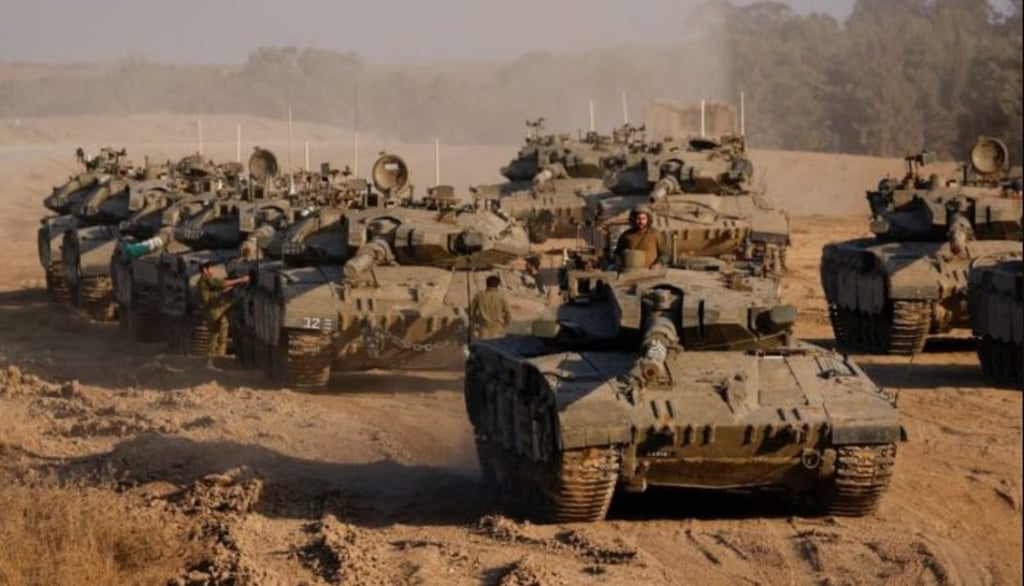Israel’s Gaza City Offensive: A Military Stretched Thin Faces Manpower Challenges
8/22/20254 min read


Israel’s Gaza City Offensive: A Military Stretched Thin Faces Manpower Challenges
Introduction: A New Chapter in a Protracted Conflict
As Israel launches its latest military offensive in Gaza City, the largest urban center in northern Gaza, the nation faces a complex and daunting challenge. The operation, aimed at dismantling what Israeli Prime Minister Benjamin Netanyahu calls one of Hamas’s last strongholds, comes after nearly two years of relentless conflict. With the Israel Defense Forces (IDF) calling up 50,000 to 60,000 reservists and extending the service of 20,000 more, concerns are mounting about the military’s capacity to sustain this effort. Reports indicate that exhaustion, burnout, and declining morale among troops could pose significant hurdles. This blog post explores the dynamics of Israel’s Gaza City offensive, the manpower crisis, and the broader implications for the region, all while navigating the delicate balance of a humanitarian crisis and international scrutiny.
The Offensive: A Strategic Push with High Stakes
On August 20, 2025, the IDF announced the initial stages of a large-scale operation in Gaza City, codenamed “Gideon’s Chariots II.” Israeli forces have already secured positions on the city’s outskirts, particularly in the Zeitoun and Jabalia neighborhoods, following intense bombardment. The goal is to disrupt Hamas’s remaining infrastructure, which the IDF claims includes military and governmental strongholds. Prime Minister Netanyahu has emphasized a shortened timeline for the operation, initially estimated at five months, signaling urgency to end Israel’s longest war. However, the plan has sparked widespread concern, both domestically and internationally, due to its potential to exacerbate Gaza’s already dire humanitarian crisis.
The IDF’s strategy involves encircling Gaza City, allowing civilians to evacuate south through checkpoints while targeting Hamas fighters. Preparations include setting up tents for displaced Palestinians, though formal evacuation orders are yet to be issued. The United Nations and humanitarian organizations have warned that the offensive could lead to mass displacement and worsen starvation and medical crises, with one in three children in Gaza City already malnourished.
A Military Under Strain: The Manpower Dilemma
Israel’s military relies heavily on reservists to sustain prolonged operations, as its active-duty force, primarily conscripts, is relatively small. The current offensive requires an unprecedented mobilization of 50,000 to 60,000 reservists, a significant burden on a nation weary from nearly two years of war. IDF Chief of Staff Lt. Gen. Eyal Zamir recently highlighted the toll on troops, citing attrition and burnout. A survey from Agam Labs at the Hebrew University of Jerusalem revealed that 40% of soldiers are less motivated to serve, while only 13% reported increased motivation. This decline in morale, coupled with public support for ending the war, underscores a growing challenge for the IDF.
Reservist Avshalom Zohar Sal, who served over 300 days in Gaza across four deployments, embodies this exhaustion. “I’m in shock that we’re still talking about this war that was supposed to end a long time ago,” he told CNN, refusing to return to the front lines. A small reservist group, Soldiers for Hostages, has even called for soldiers to decline service, arguing that the operation risks the lives of hostages and fails to prioritize their safe return. While the IDF does not publish data on reservists who refuse call-ups, the military’s leniency toward such refusals suggests an acknowledgment of the strain on its forces.
Domestic and International Backlash
The Gaza City offensive has ignited fierce debate within Israel and beyond. Domestically, the decision to press forward despite military fatigue and public war-weariness has drawn criticism. Many Israelis, including those who protested in large numbers for a ceasefire, fear that the operation could endanger the 20 remaining hostages believed to be alive in Gaza. The government’s dual objectives—destroying Hamas and freeing hostages—appear increasingly at odds, with critics like Zohar Sal arguing that the focus has shifted solely to an unattainable goal of eliminating Hamas.
Internationally, the offensive has met with sharp condemnation. UN High Commissioner for Human Rights Volker Turk called for an immediate halt, warning of “more killing, unbearable suffering, and senseless destruction.” European leaders, including EU Council President Antonio Costa, have criticized the plan as a violation of international law, with Germany suspending arms exports to Israel. Hamas has accused Israel of disregarding ceasefire proposals, including a recent 60-day truce offer that would release half the hostages, further complicating diplomatic efforts.
Humanitarian Crisis: A Ticking Time Bomb
The humanitarian situation in Gaza is catastrophic, with over 62,000 deaths reported since October 2023 and a looming famine. The offensive risks displacing nearly a million people in Gaza City, many already displaced from earlier operations. The UN reports that child malnutrition has tripled in less than six months, and aid organizations are struggling to deliver supplies amid Israel’s tightened blockade. Netanyahu denies claims of starvation, blaming Hamas for looting aid, but the international community remains alarmed by the worsening crisis.
What Lies Ahead?
As Israel presses forward, the success of the Gaza City offensive hinges on its ability to overcome internal and external challenges. The IDF’s reliance on reservists, coupled with declining morale, raises questions about sustainability. Diplomatically, Israel faces growing isolation, with allies like Germany reevaluating support. The humanitarian toll and the fate of the hostages add further complexity to an already fraught situation.
Thought-Provoking Questions for Readers
Can Israel balance its military objectives with the humanitarian and diplomatic consequences of the Gaza City offensive?
How might the IDF address its manpower challenges without compromising operational effectiveness?
Should international pressure for a ceasefire take precedence over Israel’s stated goal of dismantling Hamas?
What role can global mediators play in resolving the conflict and ensuring the safe return of hostages?
hello@boncopia.com
+13286036419
© 2025. All rights reserved.